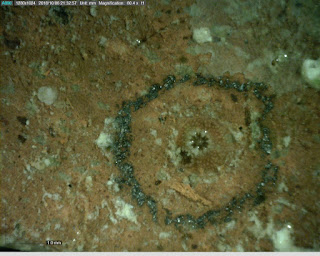Clear blue
I lay on my stomach, put my face in the water, and paddled forward with my feet. One bright pink fin was attached to each of them. With the zipper of my wetsuit open, I could feel a refreshing stream of water along my back, but my arms and legs were protected by the tight, clingy neoprene. On the ocean surface were plentiful clumps of Sargassum , a tuft-like brown alga that floats. I spread my fingers wide and felt the rough, weedy web scrape against my palms. I noticed how much more abundant the Sargassum seemed from below - hundreds of clumps floating on the glassy mirror of the ocean surface. With my body prone and my eyes directed downward, I could see all the way to the seafloor. Dark brown and black formations dotted the rock, which coalesced into a reef about a hundred yards in front of me. I knew the corals were more colorful than they seemed from up here, having just swum past them at the end of my dive, but I still marveled that I could see them from the surface. The water
